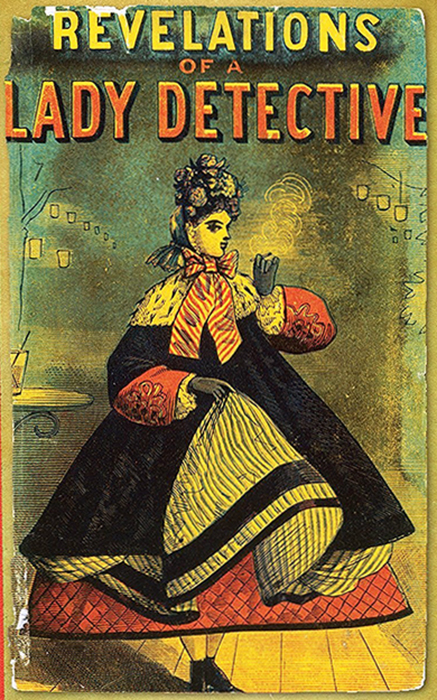Tazreen Jahan Bari, one of the curators of the Library’s current Exhibition, Detecting the Anxious Gaze; The Victorian World in Flux

Who came first? The fictional female detective or the real one?
For detective story readers, it’s not unusual to assume detectives were an imaginary creation before they were real. In the newspapers of the Victorian age, however, reports of female detectives chasing after thieves and adulterous husbands in disguise were making the rounds long before the first fictional female detectives in Victorian England emerged.
Who were the first fictional female detectives of Victorian England?
Andrew Forrester Jr.’s The Female Detective and William S. Hayward’s Revelations of a Lady Detective were published in 1864, featuring Miss G and Miss Paschal, the first professional female detectives in Victorian literature. These women are seen as professional detectives working with the law enforcement institutions. From murder mysteries to forgery, nothing escapes the scrutinizing eyes of these two elusive women.
Who were the real detectives dominating the late Victorian newspapers?
While it took 50 years and a war to imagine a woman serving in the law enforcement institute, unofficially private detectives ran the show long before the first fictional female detective emerged.
The earliest example of such mentions in the newspapers is the story of a female detective capturing a thief who had run away with her clothes, published in Galway Packet and Connaught Advocate on December 3, 1853. Her ingenious way of capturing the thief earned her the title “female detective” in the newspapers. The newspapers of the 1850s – 1860s document many occurrences of women working in cases of adultery, divorce, shoplifting and petty theft using disguise and surveillance.
How did these private female detectives enter the workforce?
The Matrimonial Causes Act of 1857 created a new market for private detectives for catching adulterous husbands and eloping wives. Women’s association with acquiring information through gossiping and surveillance, paired with an increasing financial need, allowed women to enter the workforce as private detectives.
Some of these private detectives were part of male-led private detective agencies. Unfortunately, we know very little about the private female detectives of the time. In the 1880s, the two rival agencies dominating this market were Slater’s Women Detectives and Moser’s Ladies Detective Agency.
Who was Maud West?
Maud West is one of the most popular and well-known private female detectives of this time. Maud was famous for her method of disguising for detective work. In 1905, Maud West set up her own private investigation agency. She became famous through numerous articles about her detective work and agency published in British and American newspapers.
Who was the first official female detective?
The first female detective became a part of Scotland Yard as a police officer in the early 20th century. In June 1918, Lilian Wyles, with 25 other officers, started training for her new position in the Scotland Yard and became a patrol officer on February 17, 1919. On December 27, 1922, Lilian Wyles became the first woman in the history of the Metropolitan Police to join the Criminal Investigation Department (C.I. D) as an inspector. They promoted Lilian to Woman Detective Inspector First Class on February 18, 1935.
From the nameless private detectives who worked alongside Maud West to the officially recognized female detective Lilian Wyles, they collectively constructed the female detectives we know and love today.
Byline:












Leave a Reply
You must be logged in to post a comment.